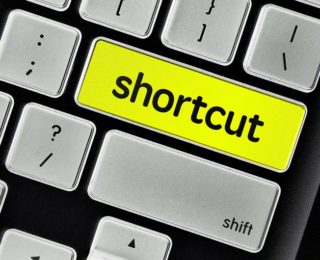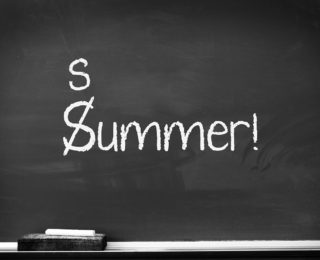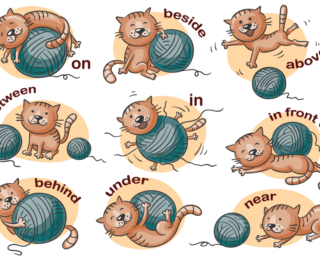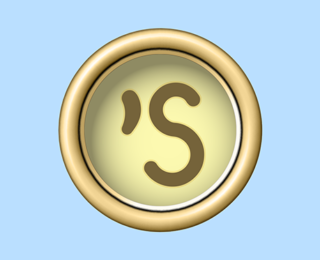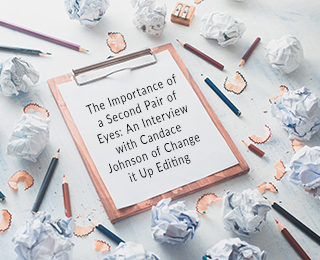
The Importance of a Second Pair of Eyes: An Interview with Candace Johnson of Change it Up Editing
Your eyes stare unblinkingly at the computer screen. You reread the last sentence, smiling in satisfaction over the cliffhanger it took you hours to write. Your eyes shift to the clock and widen as you realize the ungodly hour of four in the morning has arrived. You shut your laptop, shuffle your way to bed, and dream of the acclaim you’re sure to garner when this novel becomes a best-seller. The sun rises, and you start your day by calling Kimberly Martin, ready to get down to the nitty-gritty of book publishing. After all, once the book is written, all you have to do is publish it, right? Wrong.
Editing: the steps between drafting a manuscript and self-publishing with Jera. Or, as the online dictionary defines it, preparing written material for publication by correcting, condensing, or otherwise modifying it. Having your manuscript revised by an editor is a crucial and often undervalued step in the creation of a book. When you self-publish, it’s possible you don’t have funds to spare. However, the added level of professionalism editors contribute to your work will make it more appealing to potential buyers. After all, your book was meant to be read, not taking up shelf space in the back of the bookstore.
One professional who can transform your book into a front-of-the-bookstore kind of novel is Candace Johnson, owner of Change It Up Editing. Jera Publishing highly recommends her, along with several other editors, to clients in need of manuscript revisions. Because I felt authors deserved a better grasp of editing, I called Candace on a Monday afternoon to learn why it’s such an imperative part of the writing process. If you’re an up-and-coming writer, the following interview is just for you.
The first questions I asked Candace were about her editorial background. As previously stated, Candace Johnson is the sole proprietor of Change It Up Editing. However, Change It Up Editing didn’t come on the scene until about 2012. What was Candace doing prior to her entrepreneurial editing endeavors? She explains that she was an English major in her earlier years, but later in life, decided to head back to college. In her senior year, she interned at a publishing house and fell in love with editing. I then asked her if joining a large publishing house is the only road to success. Her response: “Not everyone has a traditional publishing background. However, having worked at a traditional publisher gives me legitimacy with my clients.” Therefore, you can trust that this article, and by extension your book, is in capable hands with Candace.
After I learned a little bit about her, we discussed what she actually does all day. As you can infer from her job title, Candace spends her day editing bodies of writing. This can be accomplished through content editing, copy editing, and proofreading. In particular, Candace specializes in nonfiction works, so for all you authorly Albert Einsteins and notating Neil deGrasse Tysons, a consultation with her can significantly improve your manuscript. Whether it’s checking your accuracy or tailoring your words to a specific audience, editors ensure the readability of a body of work reaches its maximum potential.
Though Candace loves the wordplay aspect of her job the most, there’s more involved than that. To be an editor, one must be empathetic and organized. The former because “you’re playing with someone’s intellectual property, their ego. You have to remember the manuscript is a part of who they are.” The latter because editing is not a “linear job.” Projects of varying sizes come in at all times of the day, and sometimes, a tiny project turns into a colossal mound of work. As a result, Candace has time management down to a science.
Now, you may be thinking, “This whole editing business is all well and good, but I just want to get my book out there. This is a lot of time that could be better spent elsewhere.” However, the crux of the matter remains: editing is a necessary step if you, an author, want to produce the best book imaginable. If you’re publishing a book just for the sake of it, then skipping the editing process might be a reasonable choice. In fact, Candace notes, “We’re all human and are looking for different things at different stages.” But she went on to say that she herself “does not publish anything without someone else looking over it.” That says a lot coming from a woman who edits for a living, does it not?
An hour of this question-and-answer left me wholly satisfied. Candace Johnson is a woman who knows her craft and has honed her skills with precision. The additions she makes to your work are not simply the rules and regulations of the English language. Rather, Candace suggests details written in your voice so your book remains true to your authorship while appealing all the more to your audience. Do not think of the time and money spent on hiring an editor as just another obstacle to overcome on the road of book publishing. Instead, view it as an investment in yourself and your authorial future, where being a best-selling author isn’t just a dream, but a reality.


